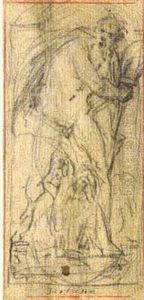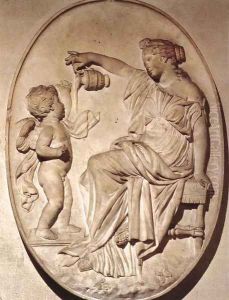Jacques Sarrazin Paintings
Jacques Sarrazin, also known as Jacques Sarazin or Sarrazin the Elder, was a French sculptor of the early Baroque period. Born in Noyon, Oise, in the Picardy region of France, his exact birth year is uncertain with sources citing either 1588 or 1592. He moved to Paris to pursue his artistic education but soon after traveled to Italy, which was customary for many artists of that era seeking to refine their skills and draw inspiration from the Renaissance masters. Sarrazin spent approximately 10 years in Rome, where he was influenced by the works of Annibale Carracci and Guido Reni, as well as the sculptures of Gian Lorenzo Bernini and Alessandro Algardi.
Sarrazin’s time in Italy was pivotal; he embraced the Baroque style, which he would later introduce to France. Upon his return to his home country around 1620, he was employed by the powerful Marie de' Medici, and his Italianate style was well-received. He contributed to the decoration of the Luxembourg Palace in Paris, which housed the queen mother.
Throughout his career, Sarrazin worked for various French nobility and was involved in numerous royal commissions. His works included designs for tombs, garden statuary, and decorative elements for buildings. Notably, he produced the sculptural decorations for the chapel of the Sorbonne and the Caryatides at the Pavillon de l'Horloge of the Louvre Palace in Paris. Sarrazin was also responsible for creating a number of busts and religious statues, which were admired for their graceful compositions and delicate modeling.
In 1656, he became one of the founders of the Royal Academy of Painting and Sculpture in Paris, which played a significant role in the development of the French artistic community, influencing the standards and training of artists. Jacques Sarrazin’s contribution to the Baroque movement in France was considerable; his works helped to define the French interpretation of the style and bridged the gap between the Late Renaissance and Baroque periods. He passed away in Paris in 1660, leaving behind a legacy that would influence French sculpture for decades to come.

